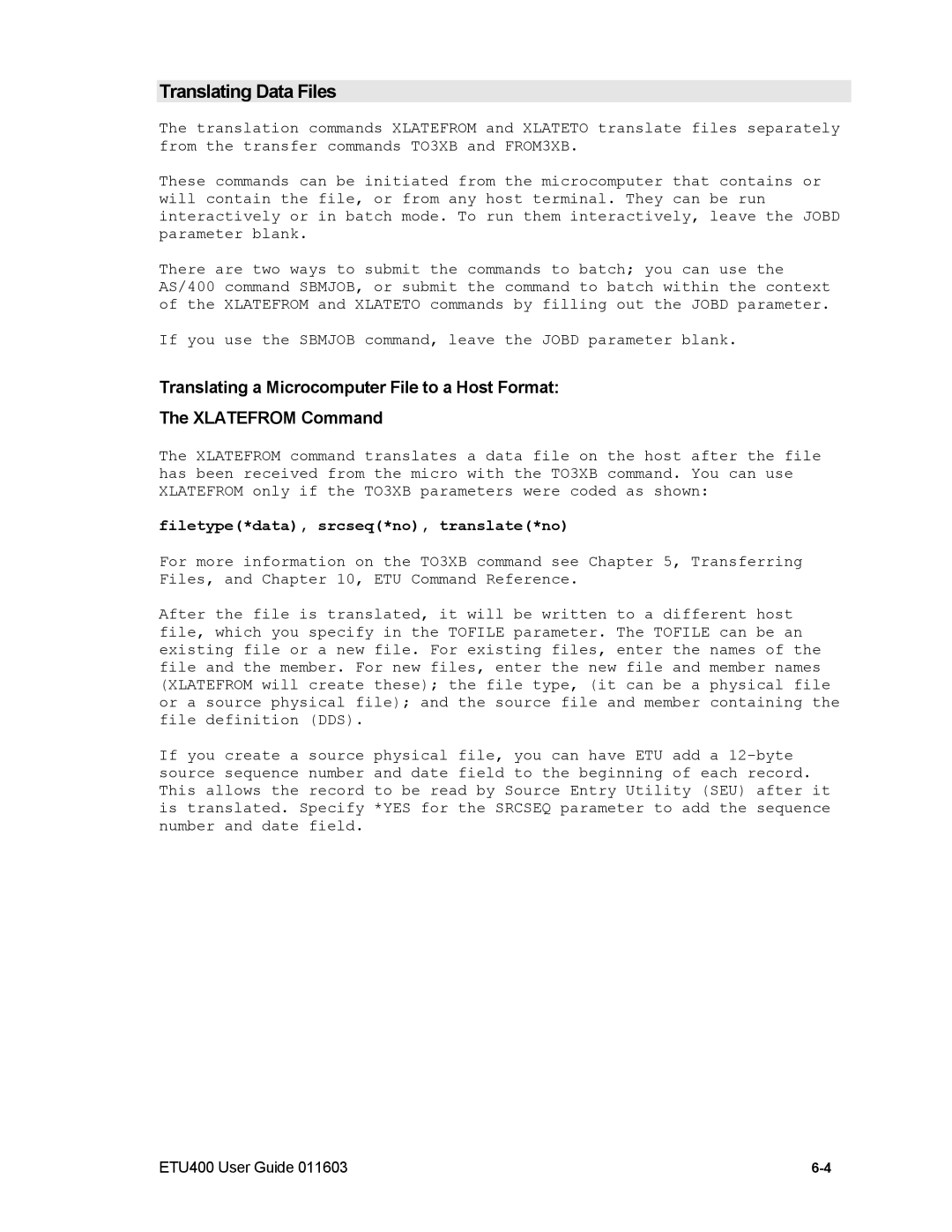Translating Data Files
The translation commands XLATEFROM and XLATETO translate files separately from the transfer commands TO3XB and FROM3XB.
These commands can be initiated from the microcomputer that contains or will contain the file, or from any host terminal. They can be run interactively or in batch mode. To run them interactively, leave the JOBD parameter blank.
There are two ways to submit the commands to batch; you can use the AS/400 command SBMJOB, or submit the command to batch within the context of the XLATEFROM and XLATETO commands by filling out the JOBD parameter.
If you use the SBMJOB command, leave the JOBD parameter blank.
Translating a Microcomputer File to a Host Format:
The XLATEFROM Command
The XLATEFROM command translates a data file on the host after the file has been received from the micro with the TO3XB command. You can use XLATEFROM only if the TO3XB parameters were coded as shown:
filetype(*data), srcseq(*no), translate(*no)
For more information on the TO3XB command see Chapter 5, Transferring Files, and Chapter 10, ETU Command Reference.
After the file is translated, it will be written to a different host file, which you specify in the TOFILE parameter. The TOFILE can be an existing file or a new file. For existing files, enter the names of the file and the member. For new files, enter the new file and member names (XLATEFROM will create these); the file type, (it can be a physical file or a source physical file); and the source file and member containing the file definition (DDS).
If you create a source physical file, you can have ETU add a
ETU400 User Guide 011603 |
